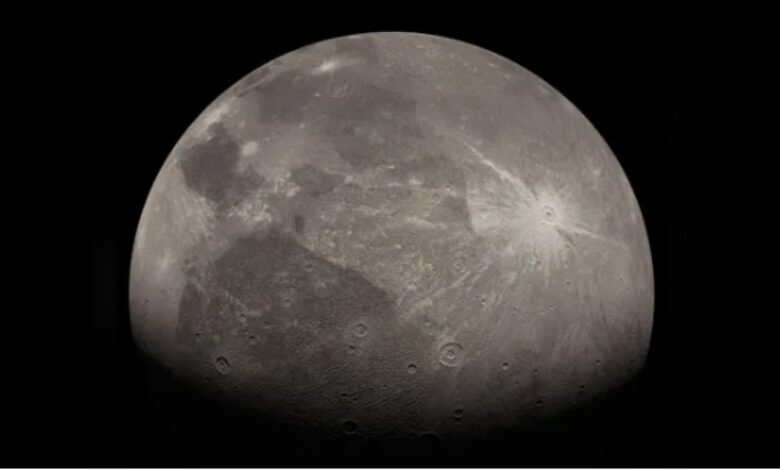Asteroid impact changed Ganymede’s rotation 4 billion years ago

A massive asteroid impact about 4 billion years ago drastically altered Jupiter’s largest moon, Ganymede. New research suggests that this colossal event not only reoriented the moon, but also had a significant impact on its geological evolution. According to planetary scientist Naoyuki Hirata of Kobe University, the asteroid that struck Ganymede was about 186 miles (300 kilometers) wide, about 20 times larger than the asteroid that caused the extinction of the dinosaurs. The impact was powerful enough to destabilize Ganymede, causing it to spin on its axis.
Impact details and effects
The studypublished in the journal Scientific Reports on September 3, 2024, reveals that the asteroid collided with Ganymede at an angle of 60 to 90 degrees, creating a crater 870 to 990 miles (1,400 to 1,600 km) wide. Hirata estimates that the impact would have completely obliterated the moon’s original surface, as the crater would cover about 25 percent of Ganymede’s surface. This impact had profound effects on the moon’s geology and internal structure.
Surface features and future research
The evidence for this dramatic reorientation is evident in GanymedeGanymede’s surface, which contains extensive grooves and concentric rings thought to be the remains of impact basins. The largest of these groove systems suggests that the moon’s orientation has changed, with the impact crater now pointing away from Jupiter. Despite earlier images by the Voyager spacecraft and the Galileo probe, many aspects of Ganymede’s surface remain poorly understood.
The European Space Agency’s upcoming JUICE (Jupiter Icy moons Explorer) mission, scheduled to arrive at Jupiter in 2031, aims to provide further insights. The JUICE spacecraft will perform detailed studies of Ganymede, Europa and Callisto, and will orbit Ganymede for nine months starting in December 2034, a first for space missions beyond Earth’s moon.




